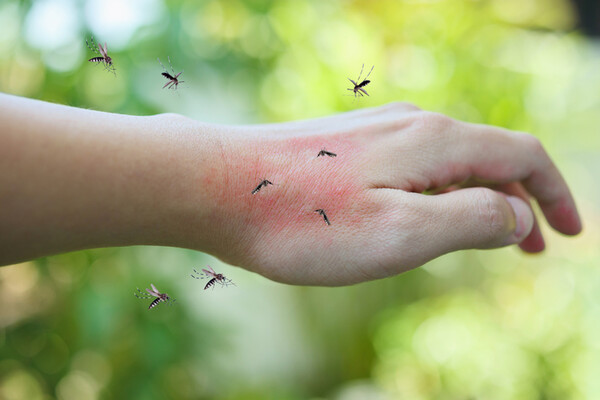Korea is seeing an increase in malaria cases again.

Malaria is a vector-borne disease that is transmitted through mosquitoes. It is known as one of the infectious diseases with the highest global burden of disease, with approximately 247 million cases in 84 countries in 2021, according to the World Health Organization (WHO)'s report in 2022.
While Korea declared that it had eliminated malaria in 1979, cases reemerged in 1993.
After reaching a peak of 4,142 cases in 2000, malaria cases decreased to 294 in 2021 after the Korea Disease Control and Prevention Agency (KDCA) launched its malaria elimination program.
However, malaria cases started to increase again with 420 cases reported in 2022.
This year, a total of 338 cases have already been reported as of July 8, which is 2.4 times higher than the same period last year at 140.
The number of malaria-carrying mosquitoes has also surged five times more than usual this year due to repeated heat waves and heavy rains.
According to the KDCA's "2023 Malaria Vector Survey and Monitoring Project" last Wednesday, the average daily mosquito index was 7.1 mosquitoes at 50 collection points in malaria risk areas --Incheon, northern Gyeonggi Province, and Gangwon Province -- in the 25th week.
This is about five times higher than the average of 1.5 mosquitoes during the same period in the last five years and more than twice as high during the same period last year.
Of the total mosquitoes, malaria-carrying mosquitoes accounted for 54 percent of all mosquitoes collected in week 25, which is a 2-fold increase from the previous year.
Considering that Korea is a priority malaria elimination country designated by the WHO, which means that the country aims to achieve malaria elimination by 2030, the KDCA stressed that it is important to recognize malaria patients early and stop transmission early through accurate diagnosis and treatment.
However, such a goal may not be easy to achieve as Korean physicians lack experience in diagnosing and treating malaria due to the low number of annual cases.
According to the KDCA, malaria cases in Korea are concentrated in certain regions -- Incheon, Gyeonggi, and Gangwon Province, and the incidence rate is low at 0.8 per 100,000 people.
As a result, many healthcare providers are inexperienced in treating malaria patients, which can lead to delayed diagnosis and inadequate treatment.
KDCA publishes revised malaria guide for healthcare providers
To increase diagnosis and allow proper treatment, the KDCA has published a revised version of the "Malaria Practice Guide" for healthcare providers in collaboration with the Korean Society of Infectious Diseases, the Korean Society of Pediatric Infectious Diseases, and the Korean Society for Laboratory Medicine.
This comprehensive revision of the malaria treatment guide is designed to raise awareness of malaria among healthcare providers and guide them in the appropriate diagnosis and treatment of patients, based on the latest domestic and international guidelines and research trends.
The revised edition focuses on point-of-care applications for healthcare providers, and provides standardized treatment for adults, children, and high-risk groups, such as pregnant women.
The revision also includes updated information on the use of antimalarial drugs, including the types, methods, and dosages of drugs, the life cycle of malaria protozoa, and the characteristics of each type of malaria.
"KDCA and related societies are working together to protect the public from malaria through timely diagnosis and treatment of malaria patients," KDCA Commissioner Jee Young-mee said. "We hope that this jointly published guide will be actively utilized in actual medical practice to quickly diagnose and treat patients with malaria, thereby helping to stop malaria transmission early and achieve the goal of malaria elimination certification by 2030."
Jee also stressed that the KCDA will produce an educational video for healthcare providers based on the new treatment guide and distribute it in July.

